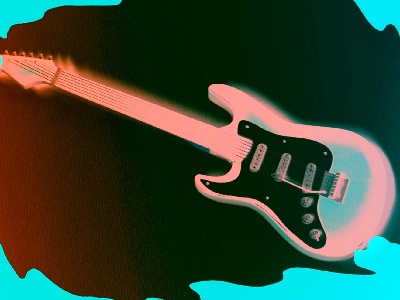Developing a Sense For Diatonic Thinking
 Diatonic guitar thinking means that you use the chords and arpeggios that can be derived naturally from a given key, without having to alter any notes with accidentals.
Diatonic guitar thinking means that you use the chords and arpeggios that can be derived naturally from a given key, without having to alter any notes with accidentals.
This means you can base your chord progressions or accompaniment on a certain scale, and all the notes that form the chords, are present in the scale.
For any key, there are seven notes in the scale. Each note of the scale can form a chord that uses only the other notes in that scale. This means that in their most basic form, there are seven diatonic chords in a scale. This is the basis of diatonic thinking. All the chords you form from a diatonic scale, are related, since they use the same selection of notes.
Start at the Bottom…
The easiest way to approach diatonic guitar thinking, is to start at the bottom note of the scale you are using. That note becomes the root note for the chord you form. As an example, in the key of C Major, there are seven notes, or degrees in the scale.
The degrees are represented using roman numerals, with capitals for Major chords, and lowercase for Minor chords. The root note is C, so C a C Major chord is formed. This is represented by ‘I’.
The second and third degrees are both minor chords, namely D Minor and E minor. They are designated by ‘ii’ and ‘iii’. The fourth and fifth degrees are major chords, which for the key of C Major, are F Major (IV) and G Major (V). The sixth degree (vi) is minor, so A Minor is the chord that is formed.
The sixth degree minor chord for any major scale, forms the basis for the relative minor scale for that particular major key. The seventh degree (vii°) is always a diminished minor for a major diatonic scale, so B Diminished Minor is the chord.
Adding Variations to Your Chords
The above sequence of chords forms the basic building blocks you would use in diatonic guitar thinking. For variation, you can use a diatonic major scale, and using the seven degrees and their associated chords, you can “flavor” them by forming seventh chords. They will still all be diatonic chords, since only the notes of that scale are being used, but they sound slightly different, due to the structure of the seventh chords.
For example, in the key of G Major, you can build a sequence of diatonic Seventh chords as follows:
• (I) G Major Seventh
• (ii) A Minor Seventh
• (iii) B Minor Seventh
• (IV) C Major Seventh
• (V) G Dominant Seventh
• (vi) E Minor Seventh
• (vii°) F# Minor Diminished Fifth
The diatonic chords are represented with Roman numerals, instead of just their letter, to make it easier to describe sequences in a certain key. For example, if you know you are playing a piece in the key of C Major, and the diatonic chord progression is I, vi, V, then you know that the chord changes will be C Major, A Minor, G Major.
These progressions are used in different keys, so once you become familiar with them in one key, you will be able to anticipate what they will sound like in another key. In essence, learning and understanding the basics of diatonic guitar thinking, helps you with chord progressions, soloing and playing accompaniment.
Intuitive Lessons For Guitar Players of All Levels
Jamplay is the BEST online guitar lesson website that offers step-by-step videos in hi-def resolution. They cover EVERY genre of guitar styles and have comprehensive content for guitarists of any level of skill.
Jamplay also showcases a growing archive of video lessons that is updated regularly. What’s more, they also offer detailed tutorials for members to learn well known songs with the help of precise, dynamic tabs and song visualizations.
p.s: We have negotiated a wonderful deal for our readers. Get your exclusive Jamplay coupon code here…







Leave A Comment